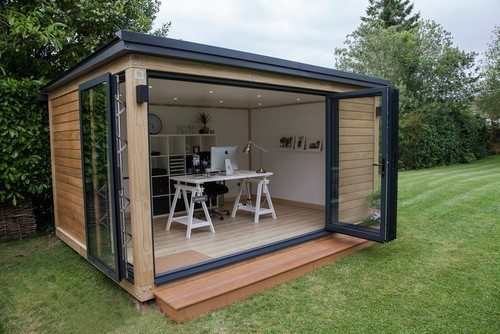Architecture in 2018 is taking some fun turns, as architects go back to the future with A-frames and forward into customer desires with dog showers! Here are three exciting trends to look for in the coming year:
Dog Showers
If you don’t have a dog, then this may strike you as absurd, but if you have some puppers you get it: there is a growing demand for a place to shower your dog. Although this may seem like a first-world problem, washing a large dog in the family bathroom is less than idea. Over the last decade, many pet stores started offering wash-and-go spaces for the customers. This model was based on the concept of the car wash.
But consumers have an endless propensity to spend money on their pets. Architects who have been tapped to build homes are incorporating dog showers in mud rooms or garages. The principle is similar to the outside or house-adjacent showers that many beach houses have, which are meant to prevent people from tracking sand into the house. Some architects say that these additions have been so popular that they may become standard.
The Humble A-Frame
An A-frame is a house style which takes its outline from the letter A. it features steeply-angled sides of the roof, usually starting near the foundation line. The sides then meet at the top to form the A. Many A-frame ceilings are open to the top rafters. The style was once very popular, especially in vacation getaway places near lakes and mountains. However, the A-frame was considered cheap and passe in the 1990s and early aughts, and it fell out of favor.
Now the A-frame is back. Design blogs led the way by featuring small cabins and houses made on the cheap, which in this era of the Tiny House is something to be proud of. Designers are embracing the trend as an offshoot of the resurgence of mid-century modern design. Architects are having fun with the A-frame, making them modern and open. A-frames are also easy to adapt to solar panels and other sustainable choices favored by modern homeowner.
The Rise of the Work Shed
The rise of the gig economy – in which the labor market is characterized by the prevalence of short-term contracts or freelance work rather than permanent jobs – has led to a surprising development: the creation of standalone work sheds.
Over 40% of people now work remotely on at least a part-time basis. The rise of detached work spaces mean that people are embracing their less permanent job situations by making special offices for them. Sheds are normally associated with housing the lawnmower, snow shovel and other outside items. But now, consumers are making sheds with wifi and electricity. There are many ways to make a modern work shed. Consumers can buy a basic shed at Lowe’s and then trick it out, but they can also obtain a prefabricated shed from one of the growing number of companies who cater to stay-at-home workers. Creatives, like writers and artists, are also embracing the home studio as an alternative to a long commute or expensive office space.














